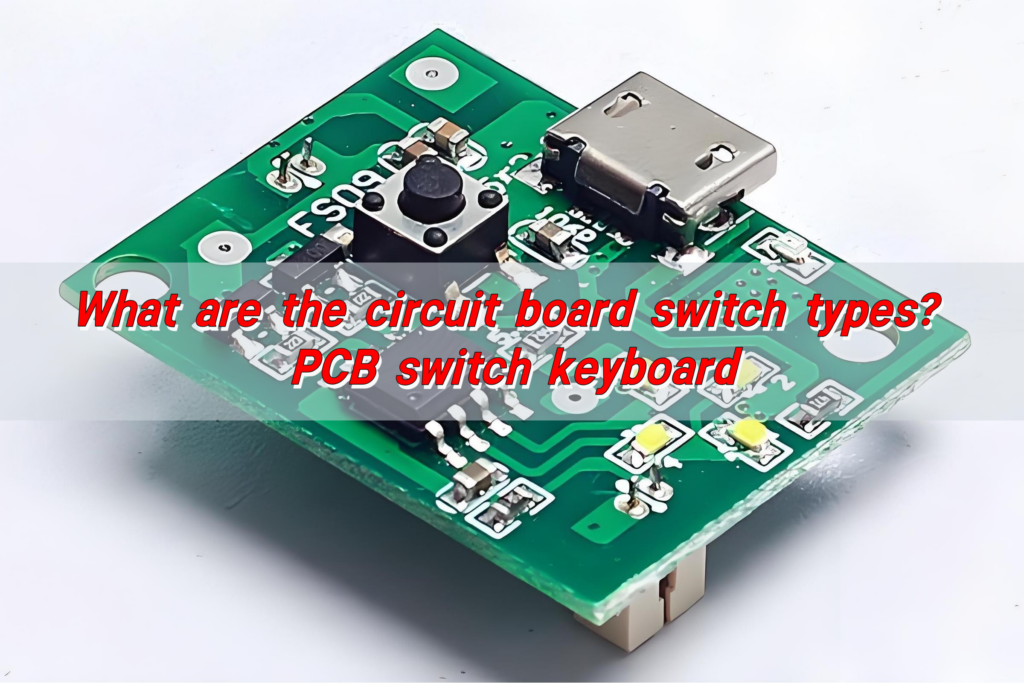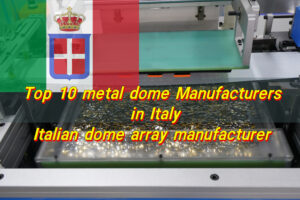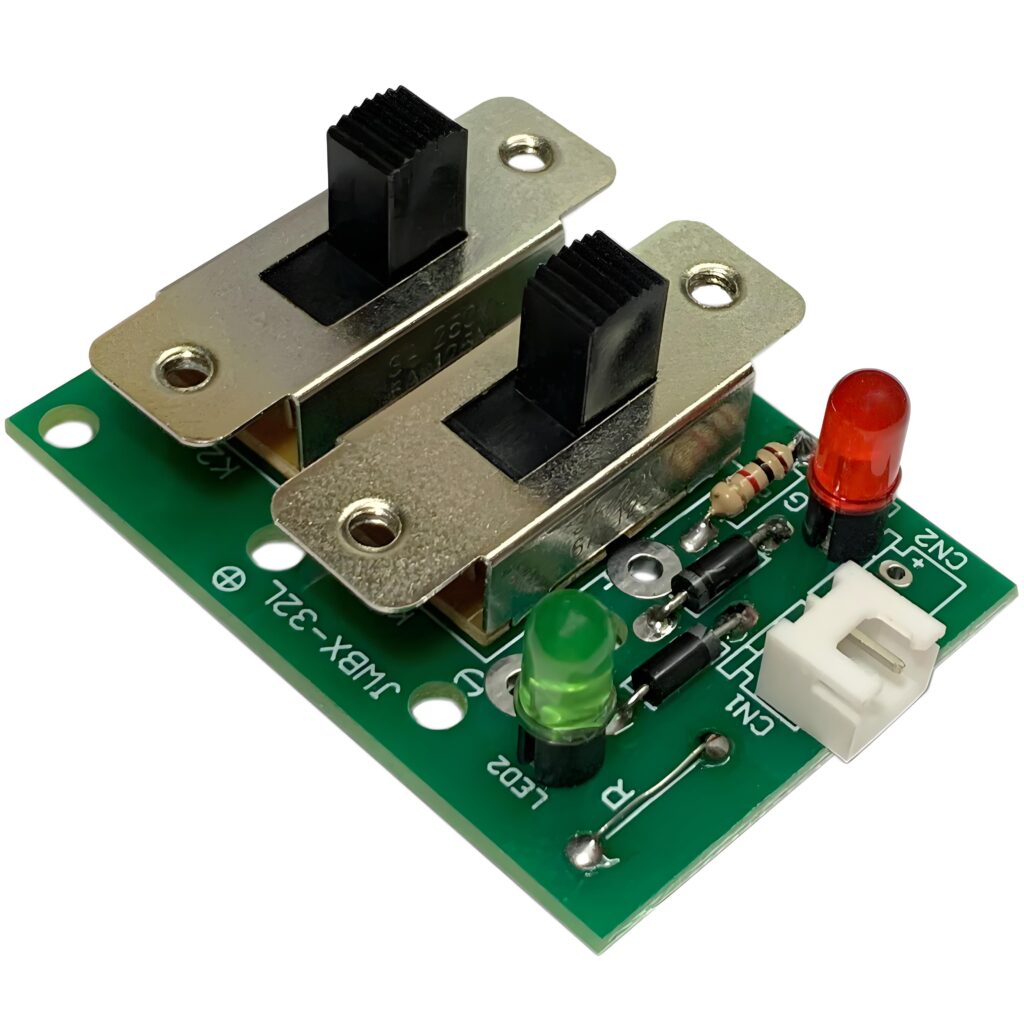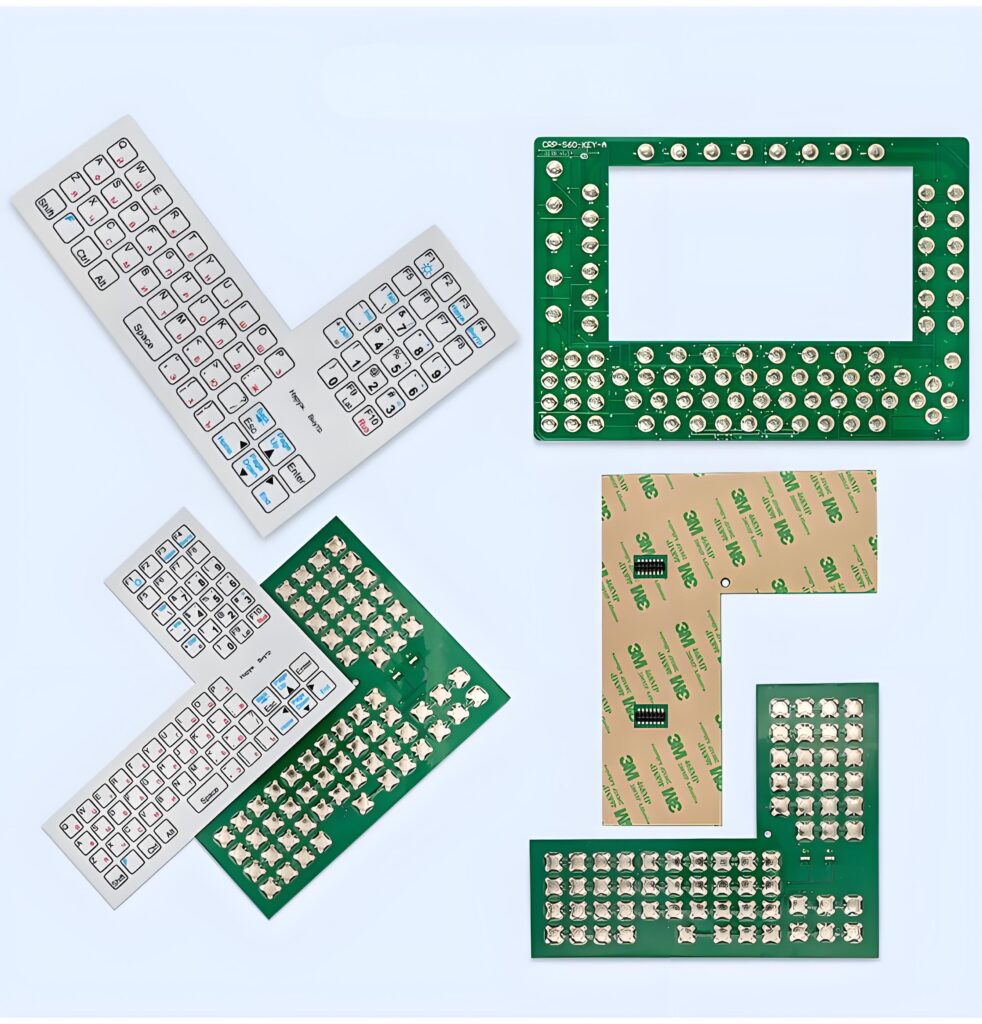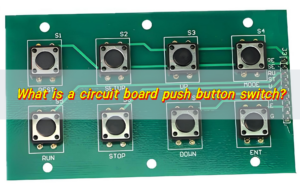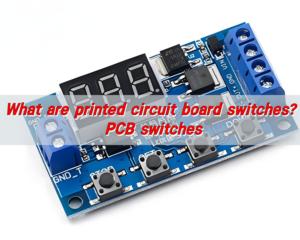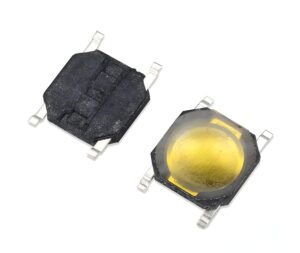There are many types of circuit board switches, including toggle switches (toggle to switch on and off, commonly used in small appliances), push button switches (press to trigger, commonly used in remote controls), and touch switches (small size, conductive contacts, suitable for precision devices such as mobile phones). These switches have become the basic components for electronic equipment circuit control with their simple structure and clear functions.
What is circuit switch?
Circuit switch is a device that opens or closes an electrical circuit. It either allows current to flow or stops it. In a printed circuit board (PCB), switches are often mounted directly onto the board itself. These are known as PCB switches.
They come in various forms—slide, toggle, push-button, membrane, tactile, dome—and each serves a different purpose. They may turn a device on or off, adjust a setting, or act as an interface for the user.
What are the circuit board switch types?
Different types serve different needs. Their simple design makes them cost-effective and easy to install.
- Push-Button Switches: You press them, and they complete a circuit. Release them, and the circuit breaks. Found in calculators, remote controls, and more.
- Toggle Switches: Known for their solid “snap” feel, toggle switches flip between two or more positions. You see them in power tools, lighting systems, and control panels.
- Slide Switches: PCB slide switch moves back and forth to open or close a circuit. These are often used for settings like “On/Off” or “Low/High”.
- Membrane Switches: Thin, flexible, and reliable. These are made of several layers, including a conductive one. A press completes the circuit. They’re often found in microwaves, medical devices, and industrial equipment.
- Dome Switches: Underneath a flexible surface is a metal dome that snaps when pressed. These are often used in PCB switch keyboards and control panels. A popular choice due to their clear feedback and long life.
- Tactile Switches: These are small, surface-mounted push switches that provide a soft but definite press. You’ll see them in handheld devices, keypads, and control buttons.
- Rotary Switches: Turn a knob, change the connection. These switches are common in older radios and settings dials.
- DIP Switches: They allow manual settings directly on the PCB. Used for configuration and customization in hardware without needing software.
How does a PCB on-off switch work?
PCB on-off switch is simply a mechanical or tactile switch mounted onto the circuit board. When pressed or moved, it connects or disconnects the conductive path.
This switch allows or blocks the flow of electricity on the board. When “on,” the circuit is complete. When “off,” the flow is cut.
This type is used in nearly every consumer device: TVs, fans, lights, speakers.
What’s the use of a PCB slide switch?
Slide switch provides easy manual control. Instead of pressing, you slide a tab from one side to the other. It’s tactile and intuitive.
For example, on a small device like a Bluetooth headset, the power switch is often a slide switch. It’s compact, durable, and gives clear indication whether the device is on or off.
Because it doesn’t require pressing force, it’s easy to use in tight enclosures or when physical feedback is helpful.
Why choose membrane switches for PCBs?
Membrane switches are ultra-slim and sealed. They’re ideal when you want a flat surface that still works as a button panel. Their flexibility makes them perfect for complex shapes and harsh environments.
They’re often the first choice for:
- Medical devices
- Industrial control panels
- Consumer electronics
- Kitchen appliances
They’re cleanable, waterproof, and tamper-resistant. Plus, you can customize graphics on their surface. This makes them a favorite for product designers looking to merge form with function.
What’s the difference between toggle and slide switches?
While both control on-off states, the feel and movement are different.
Toggle switches require a flipping motion. They’re often larger and more rugged.
Slide switches move in a straight path and are more compact.
Toggle switches are better for heavy-duty use. Slide switches work best in space-constrained environments.
What advantages do membrane switches bring to circuit boards?
Membrane switches are not just about looks. They bring several strong benefits:
- Sealed Surface: Prevents moisture and dust from entering. Perfect for outdoor or industrial use.
- Flexible Design: The shape can follow curves or angles. It adapts to product design needs.
- Tactile Feedback: With metal domes inside, you get a satisfying “click.” This confirms each press.
- Custom Graphics: You can print symbols, logos, and text directly on the surface.
- Long Life: Less wear-and-tear compared to mechanical switches.
These features combine to create a high-performance user interface that works in tough environments without sacrificing aesthetics.
How to select the right switch type for your circuit board?
Choosing the right circuit board switch isn’t just about cost or size. You have to consider the entire use-case.
- What’s the function of the switch?
- How often will it be pressed?
- Does it need tactile feedback?
- Will it be exposed to dust, water, or oil?
- How much space is available on the PCB?
- Does it need to support visual design or labeling?
For rugged use, toggle switches or membrane switches with domes are ideal. For space-saving and cost, slide or tactile switches make sense. If visual appearance and durability matter, membrane switches lead the way.
And if you want ultra-precise control with clear feedback, metal dome switches are your go-to solution. They’re tested, reliable, and feel satisfying to press.
Conclusion:
Circuit board switch types vary from simple push-buttons to advanced membrane switches with custom overlays. Each serves a unique role in making electronic devices more user-friendly, reliable, and efficient.
If you’re looking for durable, high-performance switches—especially metal domes and custom membrane switch solutions. Reach out to us at sales@metal-domes.com


